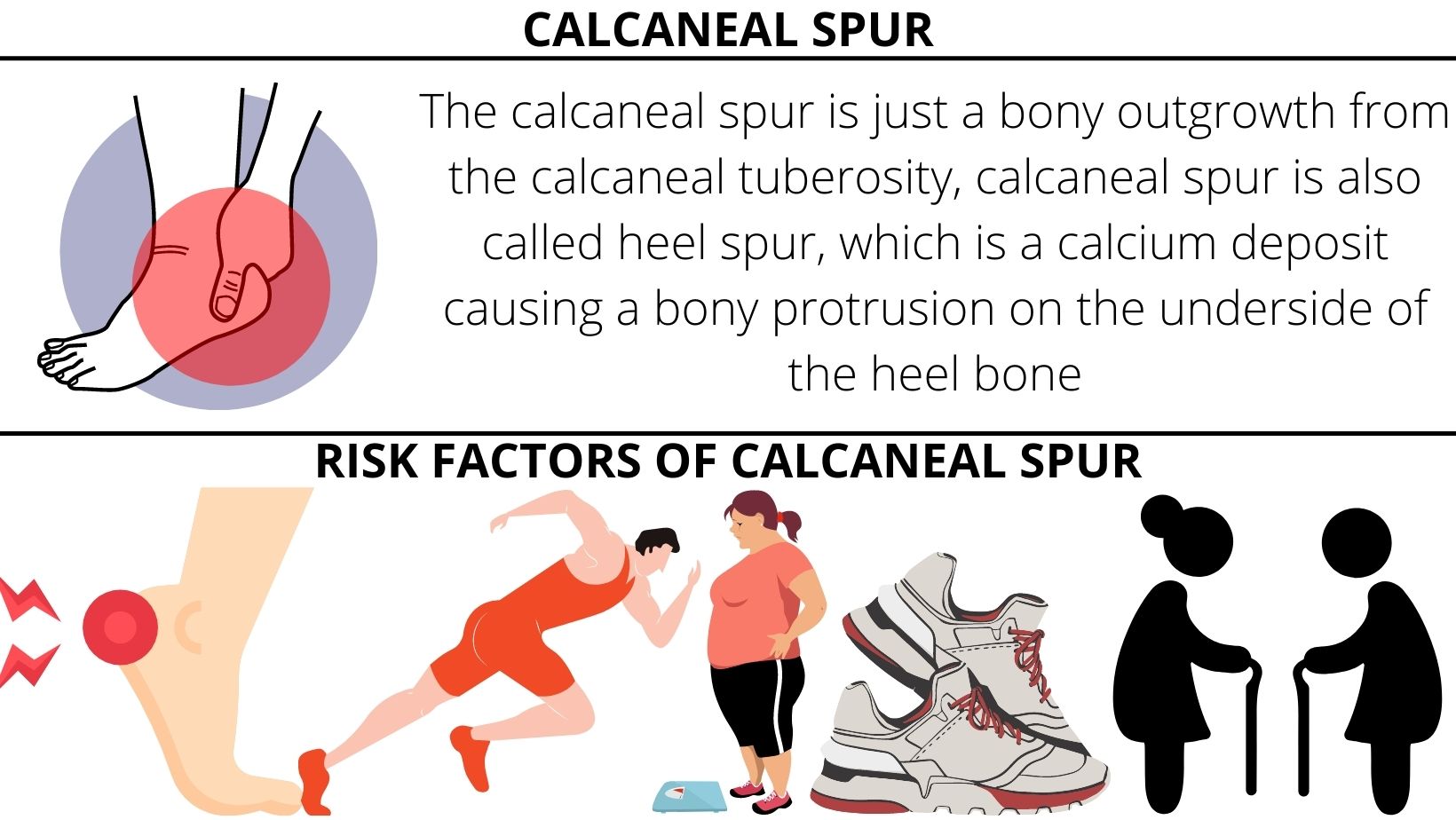THE DEFINITIVE GUIDE FOR THE TREATMENT OF CALCANEAL SPUR
WHAT IS A CALCANEAL SPUR?
The calcaneal spur is just a bony outgrowth from the calcaneal tuberosity, calcaneal spur is also called heel spur, which is a calcium deposit causing a bony protrusion on the underside of the heel bone.
When a foot is exposed to constant stress, it leads to calcium deposits on the bottom of the heel bone.
WHAT ARE THE RISK FACTORS OF CALCANEAL SPUR?
There are various activities that increase the risk of developing calcaneal spur:
- Athletic activities-running and jumping can wear down the heel and arch of the foot.
- Activity on hard surface-frequent walking, running, or jumping on hard surfaces can wear down the heel.
- Trauma to the heel-repeated injury, bruising and tearing of the membrane that covers it can lead to heel spurs.
- Getting older: common in old age
- Sex-heel spur is more common in females.
- Being overweight: in an obese person, the risk of developing calcaneal spur is high.
- Improper footwear: frequently wearing shoes that do not fit properly, have lost their support, or are not supportive, such as flip-flops, can lead to a heel spur.
There are some medical conditions that may cause heel spurs:
- Reactive arthritis
- Ankylosing spondylitis
- Plantar fasciitis
There is a misunderstanding between heel spur and plantar fasciitis because the heel spur is calcium deposits that form a bony protrusion along the plantar fascia.
In contrast, plantar fasciitis is a condition where the plantar fascia gets irritated and swollen, which causes pain in the heel.
WHAT ARE THE SYMPTOMS OF CALCANEAL SPUR?
- Pain in the heel which is sharp and mainly occurs in the morning when standing up in the morning.
- Dull aching pain in the heel remains throughout the day
- Heat radiating from the affected area
- Small, visible bone-like protrusion under the heel.
- Tenderness may present at the bottom of the heel making it hard to walk barefoot
- Inflammation and swelling at the front of the heel.
WHAT ARE THE CAUSES OF CALCANEAL SPUR?
Heel spur develops over time it is not caused by only one reason or they don’t appear suddenly after a workout or a sports event, it has many predisposing factors which all make a person susceptible to development.
DIAGNOSIS OF CALCANEAL SPUR
Diagnosis of the calcaneal spur is made by a history of heel pain and tenderness in long term. Heel spurs are also diagnosed with ultrasound and x-ray
X-ray- It shows the bony prominence of the heel bone.
TREATMENT OF CALCANEAL SPUR
The treatment of calcaneal spur includes:
- Anti-inflammatory drugs
- Cortisone injections
- Wearing cushioned sports shoes
- Using custom-made orthotics
- Pain killer
- In rare cases, surgery is required to remove the heel spur.
- Find out the cause and treat them
But these treatments are only conventional, not permanent and safe. Thus homeopathic treatment is the best treatment for calcaneal spur.
MANAGEMENT OF CALCANEAL SPUR
- Applying ice-this can help reduce pain and swelling.
- Rest -getting plenty of rest and taking pressure off the feet can help to reduce pain and swelling in the affected area.
- Epson salt bath- a warm Epsom salt bath can soften your heels, reduce inflammation and swelling and relieve heel spur pain
- Stretching and massage- foot massages can be beneficial to foot health because they can increase fluid flow, break up scar tissue, and can speed up the healing process.
- Always wear high cushioned shoes.
HOMEOPATHIC MANAGEMENT OF CALCANEAL SPUR
Homeopathy medicines offer a very safe and complete treatment of calcaneal spur. The homeopathic medicines substance and have no side effects. Some medicines such as
- Calcarea flour
- Ammonium mur
- Rhus tox
- Aranea diadema
- Aurum met
- Mezereum
- Ruta
- Mag phos
- Causticum
DO'S AND DON'TS
Do’s
- Apply a cold compress on a heel spur
- Do physiotherapy and exercise for heel spurs
- Use correct fixed shoes
- Give Rest to your heel
- Using therapeutics orthotics insoles
- Maintain healthy fat
- Doing warm-up exercises before doing heavy exercise
Don’ts
- Avoid pressure on the heel
- Avoid walking on a hard surface
- Avoid food that contain fat
- Avoid excessive running

Comments
We have received your comment , Thank You !